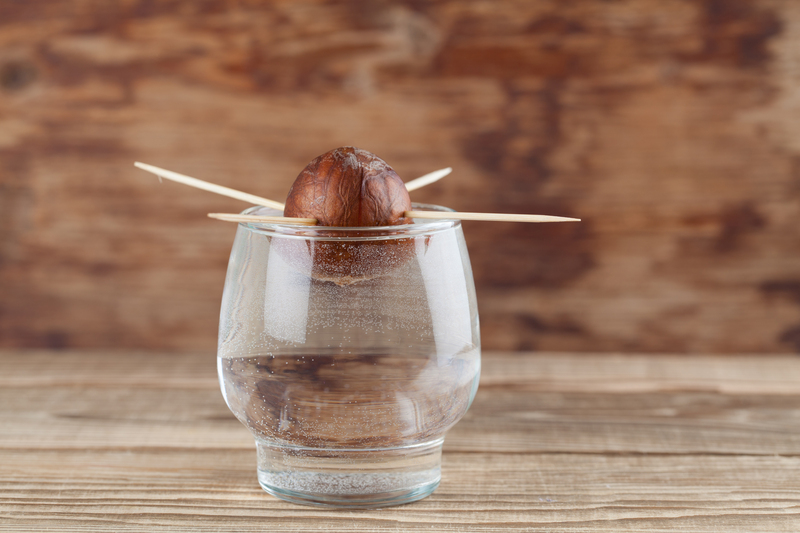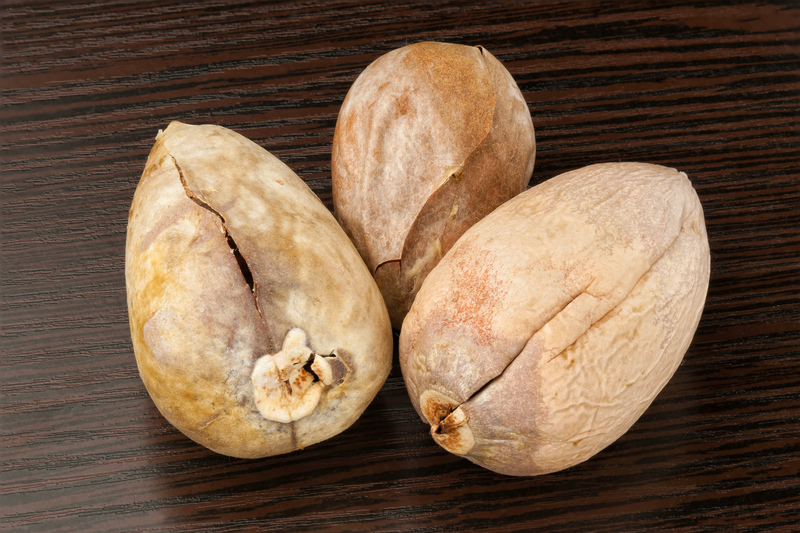Designing Gardens That Welcome Pawprints and Plants
Posted on 11/09/2025
Designing Gardens That Welcome Pawprints and Plants
Creating a harmonious outdoor space that brings together the best of nature and the joy of pet companionship is a sought-after dream for many homeowners. Designing gardens that welcome pawprints and plants isn't just a trend; it's a lifestyle choice that values the well-being of your furry friends as much as your flora. In this guide, we explore practical, innovative, and beautiful solutions to design pet-friendly gardens that thrive with flowers, greenery, and happy paws.

Why Pet-Friendly Garden Design Matters
Garden enthusiasts and pet lovers alike know the challenges: trampled blooms, dug-up soil, and concerns about toxic plants. Understanding why designing gardens for dogs, cats, and other pets matters will help you create an outdoor sanctuary that doesn't sacrifice the beauty of your garden or the happiness of your companions.
- Wellbeing for Pets: Safe, stimulating environments keep pets physically and mentally healthy.
- Sustainable Beauty: Choosing resilient plants and thoughtful layouts ensures your efforts aren't undone by playful paws.
- Peace of Mind: Knowing your outdoor space is free from toxic hazards and risks allows everyone to relax and enjoy.
Principles of Creating Pet-Friendly and Plant-Loving Gardens
Understanding Your Pets
Before breaking ground or rearranging beds, assess your pets' personalities and habits. Do they dig or chew? Are they energetic or calm? Large breeds may need open spaces, while smaller animals may love tucked-away corners. Take stock by observing:
- Common routes and favorite resting spots
- Play behaviors (digging, chasing, exploring)
- Temperaments and special needs
Selecting Safe and Durable Garden Materials
Designing gardens for pets requires sturdy, easy-to-clean materials that withstand wear:
- Pathways: Use flagstone, smooth gravel, or pavers that avoid sharp edges and are comfortable on pet paws.
- Mulch: Choose cedar or pine (avoid cocoa mulch, which is toxic to dogs).
- Fencing: Secure perimeters keep dogs from wandering while offering privacy and safety.
- Shade Structures: Pergolas, large shrubs, or sail shades give relief from direct sun.
Plant Choices: Gorgeous and Non-Toxic
One of the main challenges in welcoming both plants and pawprints in the garden is ensuring that your vegetation is safe for cats and dogs. Reference comprehensive lists like the ASPCA's for pet-safe plants. Here are popular, robust, and safe choices:
- Ornamental grasses: Fountain grass, blue fescue, and carex are soft, resilient, and hard to destroy.
- Herbs: Rosemary, thyme, basil, and sage are culinary treats and safe for most pets.
- Non-toxic flowers: Sunflowers, marigolds, snapdragons, calendula, and violets add color without risk.
- Shrubs and bushes: Camellias, boxwood, and bottlebrush are safe and create natural boundaries.
Innovative Design Ideas for Pet-Friendly Gardens
Creating Defined Zones
Just as with a well-designed interior, zoning your garden helps minimize chaos and encourages every family member to interact with nature respectfully. Dividing the yard into clear sections--such as a digging pit, open lawn, and planted beds--reduces the risk of plants being accidentally destroyed. Here's how:
- Play Areas: Install a soft, grassy patch or use artificial turf for easy cleanup and minimal dirt tracking.
- Pet Paths: Designate clear, paw-friendly trails using flagstone or gravel, guiding pets along preferred walks and away from delicate beds.
- Garden Beds: Use raised beds or sturdy edging to keep paws at bay while allowing easy human access for tending.
- Boundary Zones: Creative fencing, hedging, or trellises help separate pet and plant areas subtly and attractively.
Building Digging Corners
Dogs especially love to dig. Instead of endlessly correcting, build a "dig zone":
- Fill with clean sand or loose soil
- Bury favorite toys for scavenger hunts
- Train your dog to use this patch by rewarding them when they dig here
Pet Water Features
Design gardens for dogs and cats with hydration and entertainment in mind:
- Add a splash pond, bubblers, or birdbaths with clean, fresh water
- Install shallow, easy-to-clean bowls at multiple spots in the garden
- Ensure water features are not too deep, with non-slip edges
Using Aromatic and Repellent Plants
Some plants serve double (and even triple!) duty in the pawprint-friendly garden. For example:
- Lemongrass and lavender help repel ticks and fleas naturally.
- Mint and citronella can deter some pests while providing sensory enrichment for pets.
*Be cautious with these plants and check species-specific toxicity, especially for cats.*
Pet-Proofing Your Garden
Identifying and Avoiding Toxic Plants
The golden rule for pawprint-welcoming landscapes: if in doubt, leave it out. Avoid the following common plants, which are toxic to dogs and cats:
- Lilies (especially dangerous for cats)
- Azaleas and rhododendrons
- Foxglove, oleander, and yew
- Autumn crocus and daffodils
- Certain mushrooms and nightshades
*Always research plant toxicity before adding anything new to your pet-friendly garden.*
Safe Mulching and Composting Practices
Choose mulches that are non-toxic and avoid cocoa or rubber mulch, which can be hazardous if ingested. Compost bins should have lids or secure fencing to prevent enterprising pets from digging for food scraps, which can be harmful.
Enclosure and Escape-Proofing
Boundary solutions provide safety and peace of mind. An ideal garden designed for pets uses sturdy:
- Fencing: At least 4-6 feet high for most dogs, with no gaps at the bottom that diggers can exploit.
- Gates: Secure latches, potentially with a double gate system for high-energy pets.
- Screening: Shrubbery or hedges make climbing or escaping difficult while adding beauty.
Pawprints and Plant Growth: Finding Harmony
Low-Traffic Planting Strategy
Expect some wear and tear in your pet-welcoming landscape. Focus delicate, high-maintenance plants in areas less frequented by pets. Using structural elements like large rocks, decorative fencing, or logs can help guide pets away from vulnerable beds.
Easy-Care Lawns and Alternatives
Traditional lawns often struggle under the strain of running paws. Consider:
- Drought-resistant, fast-recovering grass mixes such as tall fescue or Kentucky bluegrass
- Clover or microclover lawns--tough, low-maintenance, and safe if ingested
- Artificial turf for high-wear dog runs or playing fields
- Stepping stones to reduce soil compaction and damage
Training Techniques to Protect Plants
Invest in training and positive reinforcement. Teach pets which areas are for play and which are for plants. Use scent-based barriers like citrus peels or pet-safe sprays to keep curious noses away from prized flowers. When pets respect boundaries, you'll maintain a thriving plant and pet garden.
Designing for Different Kinds of Pets
Gardens for Dogs
Dogs love space, stimulation, and water. When designing gardens that welcome dogs and plants:
- Install open lawns and secure, designated digging areas
- Use sturdy shrubs for paths and hideaways
- Opt for soft, durable plants along high-traffic zones
- Add canine-safe agility obstacles for training
Gardens for Cats
Cats enjoy shaded hiding spots, perches, and edible plants. Design gardens for cats and plants by:
- Planting catmint or cat grass for safe nibbling
- Creating vertical space with safe climbing structures or shelves
- Providing rockeries or bushy shrubs as lookout points
- Ensuring fences are "cat-proofed" with angled toppers or mesh
Gardens for Other Pets
For small pets (rabbits, guinea pigs, even chickens), dedicate a corner with protection from predators and a mix of non-toxic greens to munch on. Flexible enclosures can be rotated for foraging, keeping the area lush and healthy for both flora and fauna.
Seasonal Strategies for Paw-Friendly Gardens
- Spring: Check for emerging toxic plants, renew mulch, repair fencing after winter storms.
- Summer: Prioritize shade and hydration options, trim long grasses to discourage ticks and fleas.
- Fall: Remove fallen fruit or seeds that might cause digestive upset, prepare plant beds for winter wear.
- Winter: Use pet-friendly ice melt, monitor for standing water or snow build-up near pet play areas.
Maintenance Tips for Pet and Plant Harmony
- Regular Monitoring: Watch for signs of digging, chewing, or plant distress and address promptly.
- Spot Cleaning: Scoop and remove pet waste daily, using natural enzymes to eliminate stains and odors.
- Check Water Supplies: Clean and replace water in pools, ponds, and bowls often to prevent algae and insects.
- Mulch Topping: Refresh mulch as needed to cover exposed soil and reduce muddy paws indoors.

Eco-Friendly and Sustainable Choices
Sustainable gardens for pets and plants are possible with thoughtful choices:
- Native, drought-resistant plants to minimize water usage
- Rain barrels or greywater systems for irrigation (not for drinking, unless filtered)
- Organic fertilizers and pest controls to protect soil and pet health
- Renewable materials in fencing and furniture to reduce your ecological footprint
Conclusion: Grow a Lifelong Connection
Designing gardens that welcome pawprints and plants creates lasting memories, provides health benefits for everyone, and fosters the growth of both your garden and your pet friendship. By choosing non-toxic plants, using smart zoning, and customizing for the specific needs of your furry family, you can achieve an outdoor oasis that thrives with life, beauty, and joy.
Let your next gardening adventure be one where blossoms and best friends are equally at home--where your garden grows not just plants, but laughter, companionship, and wagging tails for years to come.

